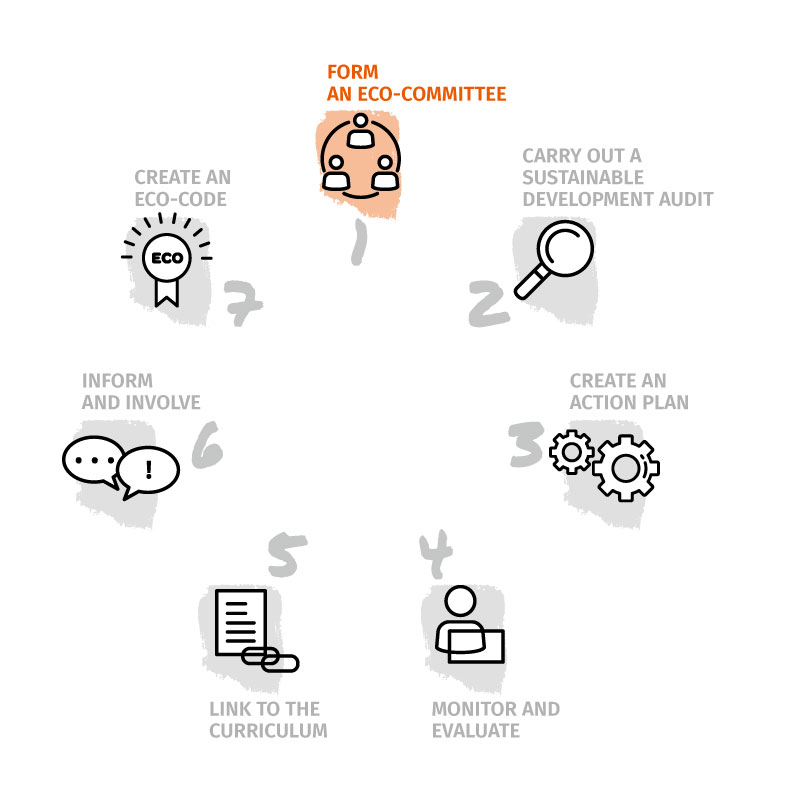What is an Eco-Committee?
An Eco-Committee oversees the Eco-Schools programme. It is the driving force behind the programme and ensures that all Seven Steps of the Eco-Schools methodology are carried out. It is also responsible for communication, making sure that everyone in the school is informed of the progress of the project.
Which form of Eco-Committee for your school?
The Eco-Committee can take several forms. In the long run, the Eco-Committee should be as representative of the whole school community as possible and should include pupils from different levels, teachers, technical staff, senior management, parents, local partners, etc. Once the Eco-Committee has been formed, it should appoint an Eco-Schools coordinator, who leads meetings and becomes the point of contact for the Eco-Schools Switzerland team.
EXAMPLES OF LINKS TO THE CURRICULUM
Primary level: Visual Arts: Draw the people on the Eco-Committee
Middle level: English/Citizenship Education: Speak about why you want to be part of the Eco-Committee in front of a small group
Secondary level: English: Learn to draw up the minutes of an Eco-Committee meeting
